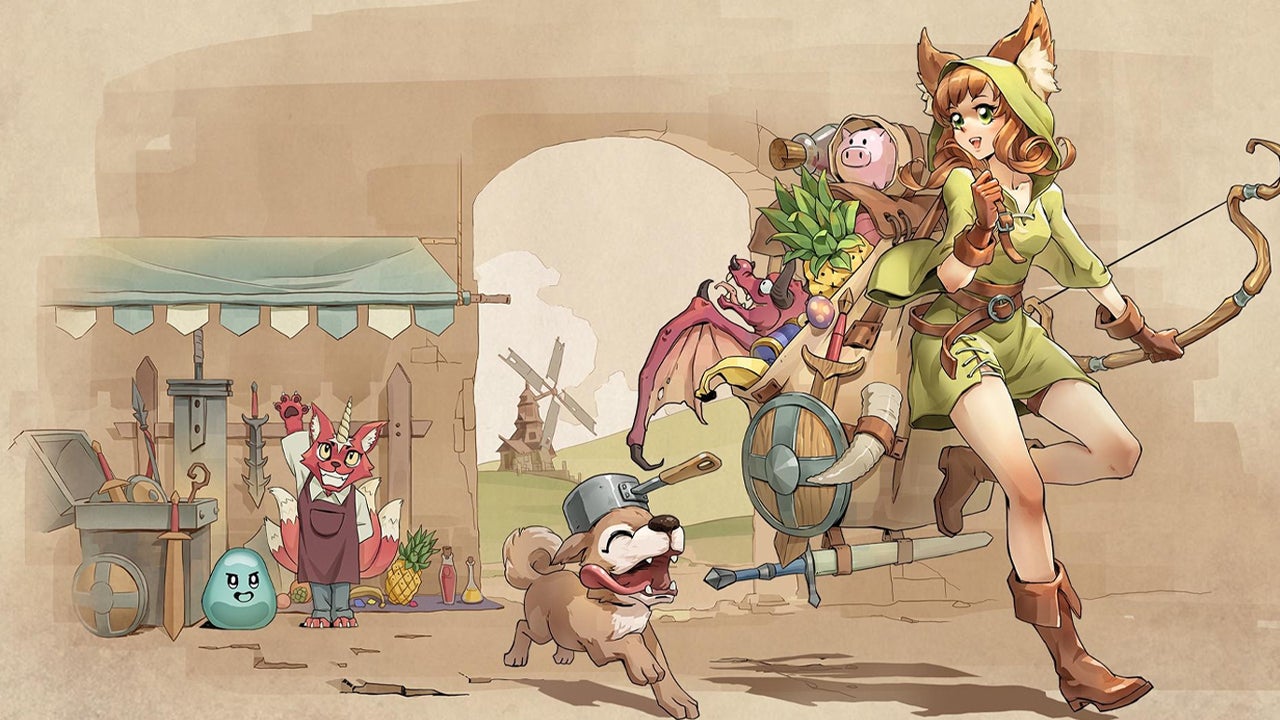
Back in the mists of 2019, just before the world ended, autobattlers erupted out of a seemingly exponentially popular Dota 2 custom game mode. Fuelled by fast-paced development from teams eager to grab a slice of Hot New Emerging Genre pie, we saw a wave of high-profile games about building up armies then sitting back and watching them do battle with those of other players.
They were neat! I and millions of others played a ton of Auto Chess, Dota Underlords, and Team Fight Tactics. But despite Valve, Riot and a handful of smaller teams all throwing their auto-fighting hats into the ring, the genre mostly fizzled, with only TFT seeming to find long-term success.
But don't count it out just yet…
Autobattlers may not have become the behemoth it briefly looked like they might, but the initial megahit of that trifecta has left a legacy full of ongoing innovation—from competitive mediaeval inventory tetris to singleplayer Pokémon roguelikes, all with automated battlin’ at their core.
Here’s the traditional autobattler experience: in real-time, you compete against 7 other players in a series of rounds where your army gets pitted against that of one other player. Each time you lose a fight your health trickles down from one hundred, and the last general standing wins. Between rounds, you buy new units and upgrade your existing ones by purchasing copies of them, pursuing synergistic alliance bonuses and items that best fit your build and counter your opponent’s. Strategy is key, but so is being served up the right units, making luck a factor—many turns will see you splurge money on fruitless shop re-rolls.
Expansion packs
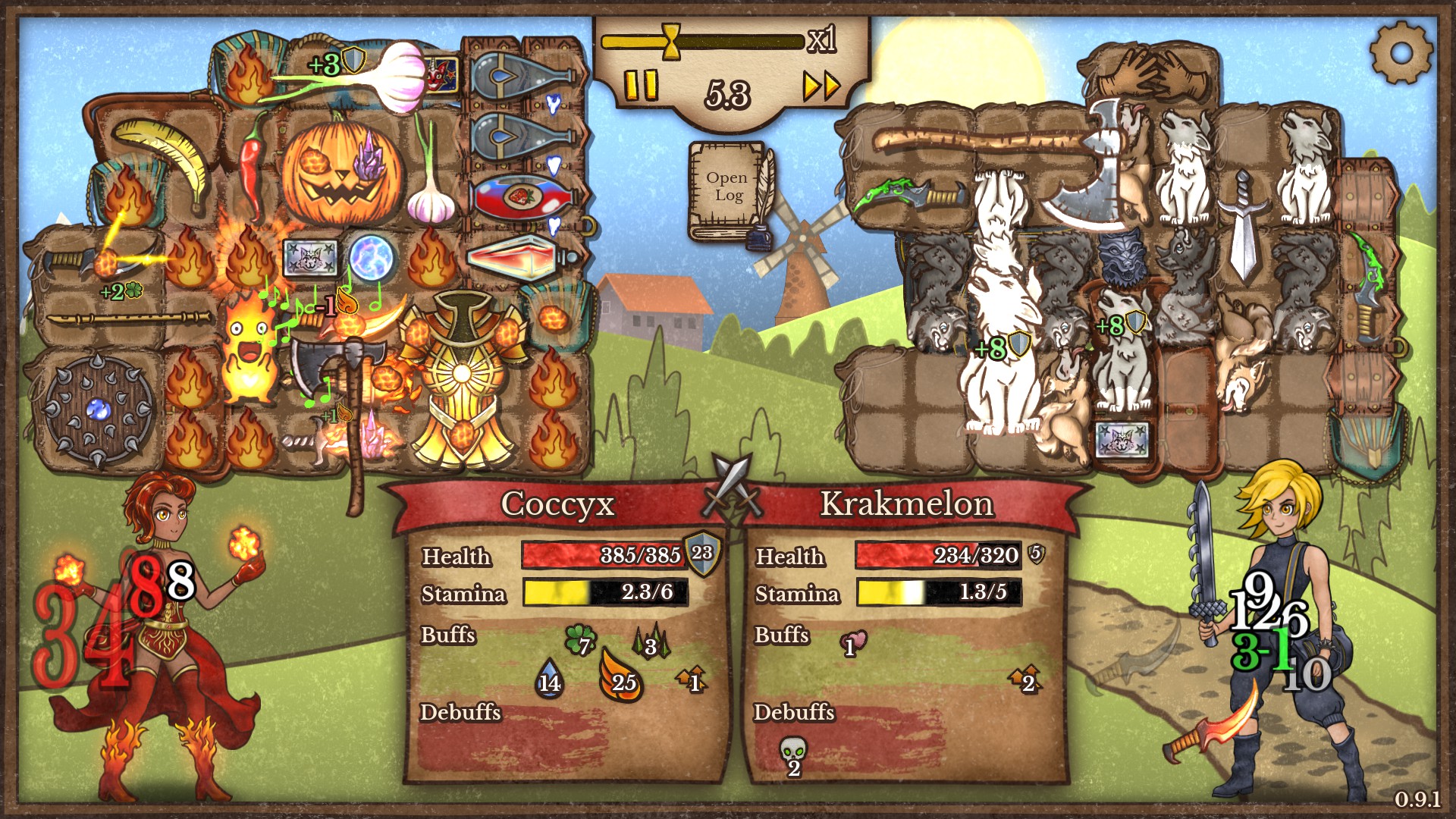
More recent indie autobattlers take that core structure and make it weirder. Backpack Battles is leading the pack right now, and for good reason. Rather than assembling an army, you’re organising a hero’s backpack—nabbing gear (and more space to put gear) from a shop, then sending your overburdened battler to scrap with other players. It’s asynchronous, so there’s no waiting around; as with all autobattlers, you’re fighting an opponent’s build rather than your opponent themselves. Here, winning ten battles means you’ve won a run (though you can also keep going and risk your ranking points in the hopes of winning more of them.)
You do lose some of the tension of a live head-to-head, and there isn’t the same dramatic arc as in a traditional battle royale structure where players get whittled down to a remaining few—but it’s worth it. Asynchronous gives you the same joy of juicy decision-making without having to drum your fingers while your and (worse) every other players’ battles pan out, to the point where the impatient can pretty much fast-forward past the clash itself and just skip to see whether their hero is the one still standing.
The biggest gaming news, reviews and hardware deals
Keep up to date with the most important stories and the best deals, as picked by the PC Gamer team.
It also means you can spend as long as you like fussing over your backpack. Success stems from weaving together a tapestry of adjacency bonuses from weapons and artefacts that come in fiddly shapes and sizes, either figuring out what to prioritise or miraculously slotting everything together so all your synergies pop off at once. Your bananas want to be next to your blueberries, which should both be arranged around your frying pan, which ideally should be next to your Hero Longsword, and those should both have bits poking into the special pockets you bought that speed up their activation by 20%, but still be in your special Ranger class starting pack that increases crit chance…you get the idea.
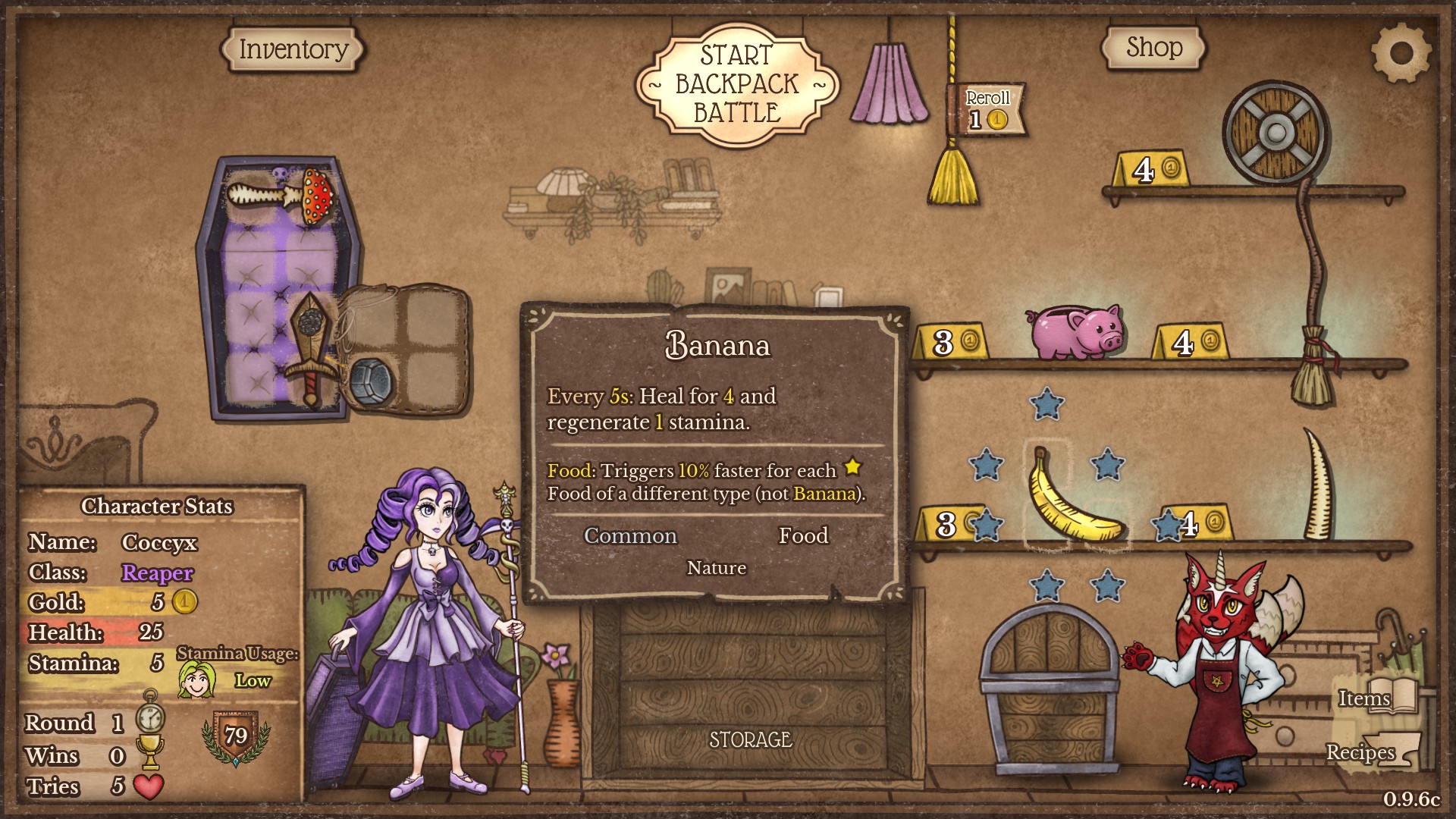
It’s much more involved than just stacking heroes of the same type, as in traditional autobattlers, but also with more concrete and readable rewards than you get from arranging combatants on a battlefield. There’s an absorbing combination system, too, where plopping, say, cheese and a sentient healing-slime next to each other will result in the slime eating that cheese and transforming into a special Cheese Goobert that increases your maximum health and provides random buffs.
There’s an initial joy to discovering every combination, slapping frying pans onto broomsticks to create shovels, glueing clovers to piggy banks for lucky piggies. For some, there’s then the pleasure of optimising those combinations, feeling out when to pay for shop re-rolls and when to adapt your build around what you’re given. I enjoy the energy of this Gdoc, put together by a player capable of embracing both the meticulous seriousness of competitive tier lists and names like “Claws Tusk Poker Hedgehogs” and “Eggscaliber Greatsword (Cheese Goob)”.
Crucially, though, you don’t need to wade through tier lists like that if you don’t want to, because there’s plenty of room for creative experimentation before rankings start pitting you against finely optimised backpacks. It’s part of how taking autobattlers out of their MOBA spawning pits has broadened their appeal beyond stuffily competitive arenas, with more emphasis on what you’re playing with than the people you’re playing against.
Pet projects
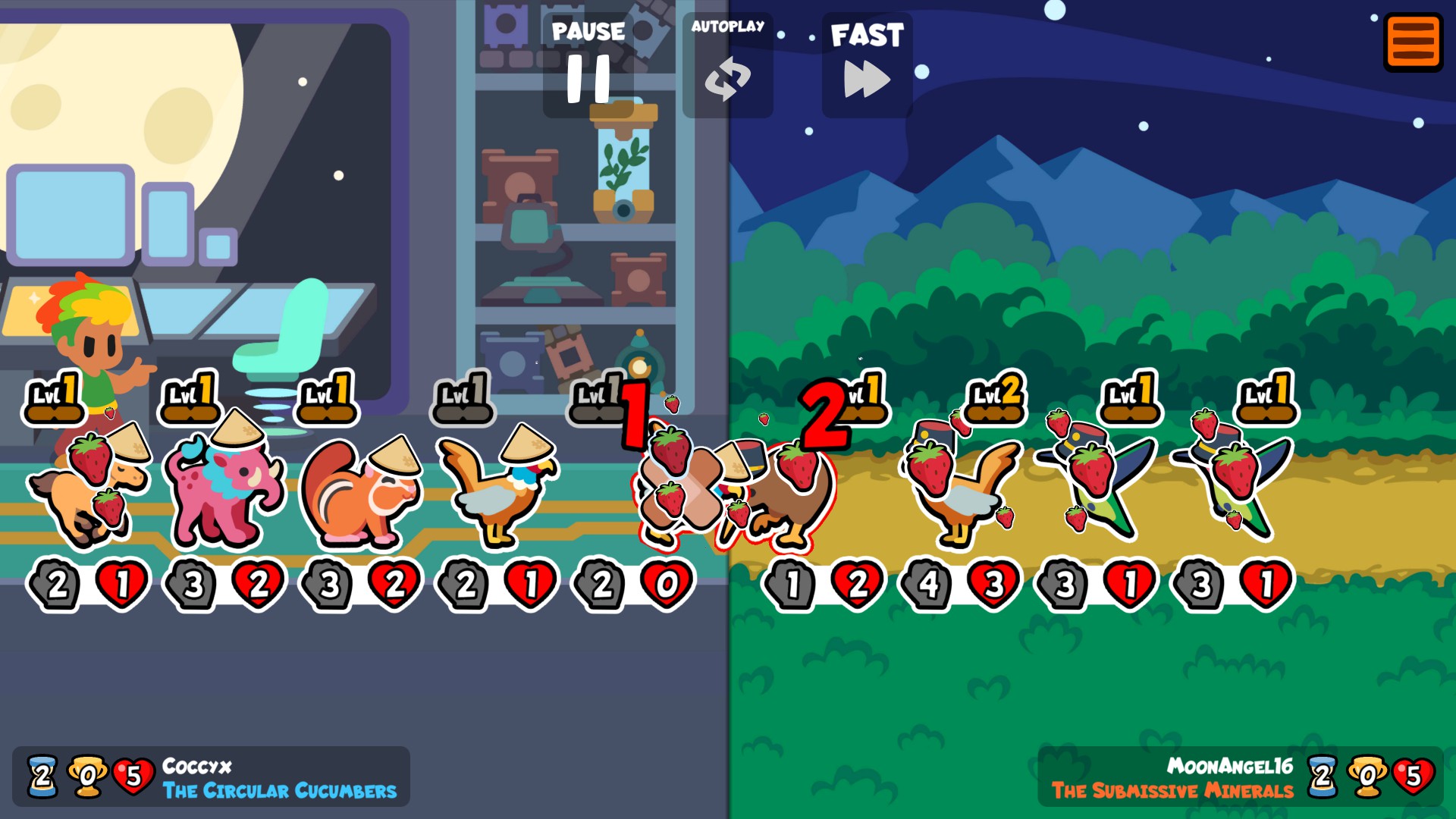
That’s exemplified in Super Auto Pets, my second favourite autobattler, in no small part because it results in friends sharing sentences like “you can pill an ant in front of an ox for perma-melon armour five turns early” and “synergising pheasants with horses gives your summons strawberries and plus one attack”.
Auto Pets hues a little closer to the original autobattler template, albeit with armies of cute animals rather than wizards, but still shrugs off that musty intensity—again, via async and silliness. It’s also immediately more readable than the likes of Underlords and Teamfight Tactics, with both pet armies forming a single line so you know whichever chump you put in front will be first to take damage. Order is core to your strategy, with pets chucking out buffs to pets in front or behind them, or leaving behind summons when they die, or feeding summons strawberries, or killing all your other pets and replacing them with fish, or adding to your trumpet count that calls in a bonus super dog, or…
The point is that you can get pulled right into all these competing considerations without getting overwhelmed by the kind of arcane and obfuscated knowledge that early autobattlers often wanted you to draw from. There’s still an involving web of synergy to weave, it’s just funnier and clearer.
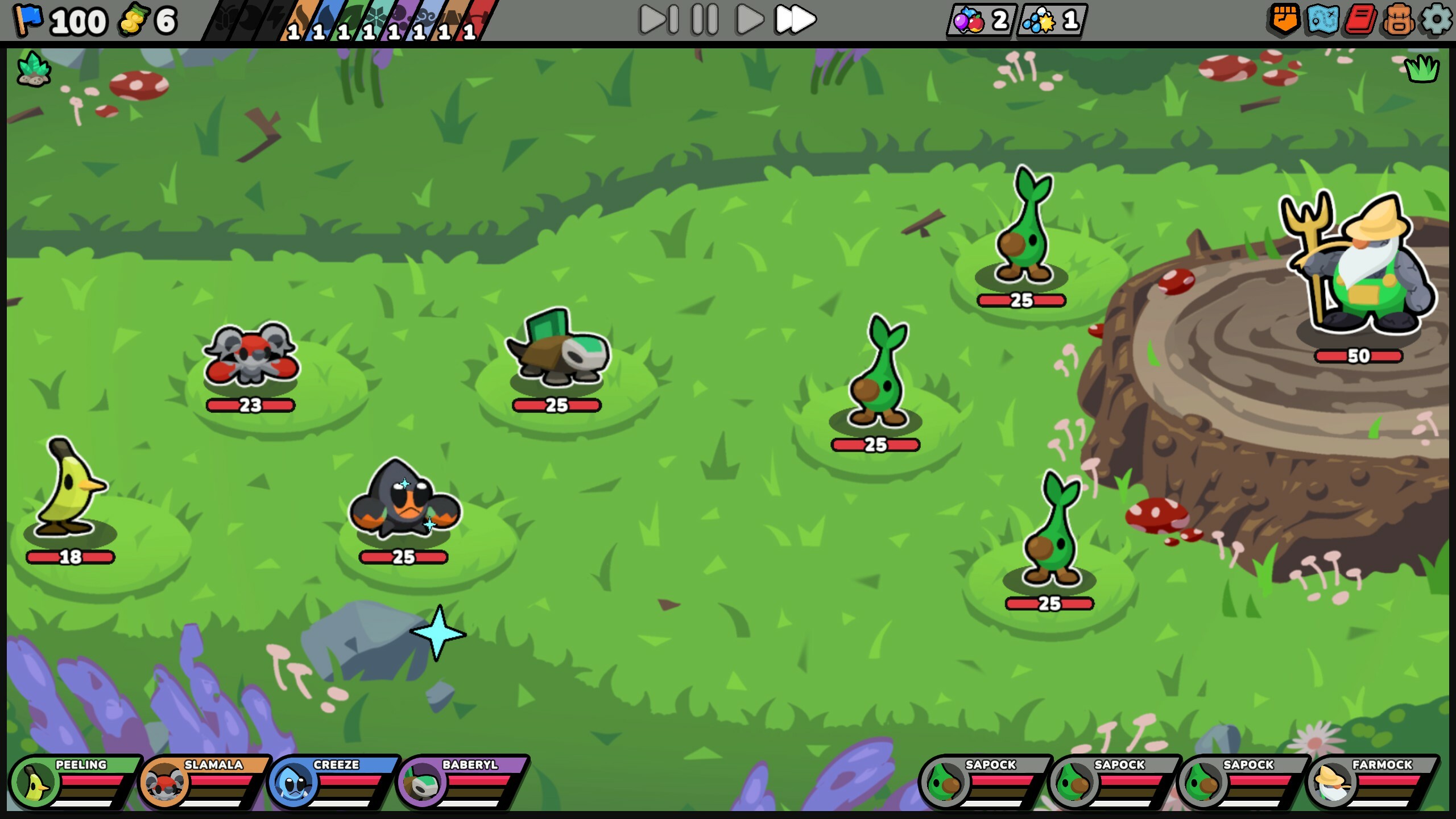
One last example, as proof of how far out the kernels of autobattling have taken root: Kādomon: Hyper Auto Battlers is a singleplayer roguelike where you pick your way through encounters in a Slay The Spire style branching map, only instead of one hero and a deck you have a team of upgradable, autobattlin’ Pokémon. Just like Super Auto Pets, you pop your creatures in a line and feed them items to make them stronger—only here rewards are doled out not just at a shop, but also via familiar end-of-battle upgrade choices.
Kādomon doesn’t boast the cleanest implementation of all those ideas, but it’s still a smart marriage of satisfying army-management and roguelike adventure. It’s a demonstration of how autobattling can feel at home outside of its roots, and a sign that the core idea could travel further still.
Developers pinching ideas from other genres and spinning them up in novel directions is a beautiful thing, with chains of recursive inspiration at the core of every great game we have, and every great game we ever will. You can trace a pleasing path from Warcraft III to Dota to Dota Auto Chess to Backpack Battles, each step bringing re-hashed and revitalised ideas to people who might have no interest in the places they first came from. Lord knows in what form we’ll see automated battling crop up next, but I bet it will make so much sense when we do.

